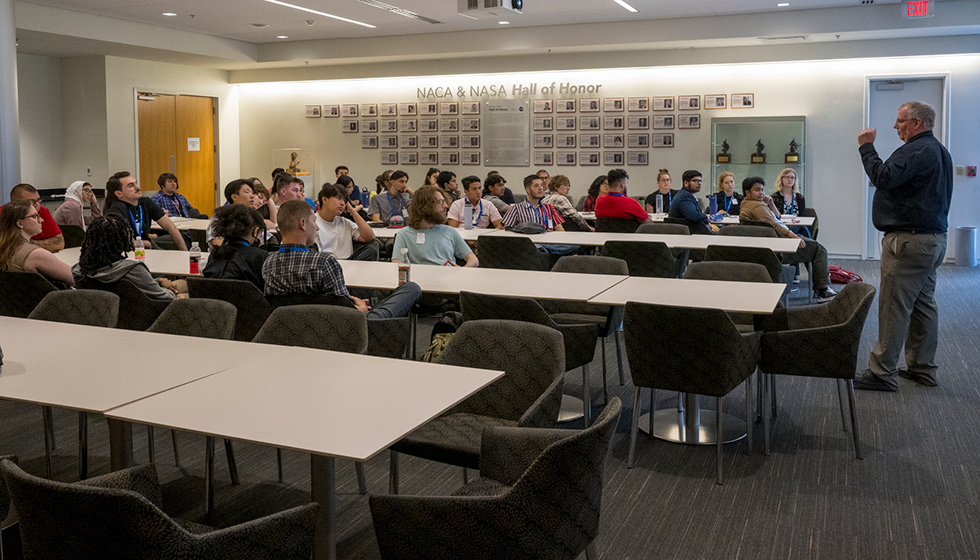September 16, 2024
This summer, Engineering Broad Field student Ike Stuhr stood out as one of only 40 community college students nationwide to successfully complete Phase 3, “Innovate,” of the prestigious NASA Community College Aerospace Scholars program at Langley Research Center in Norfolk, Virginia. Ike was selected as a team leader to address a critical challenge in the aviation industry—enhancing cargo transport solutions. This opportunity not only highlights Ike’s exceptional abilities but also underscores the importance of innovative thinking in advancing aerospace technology.
Ike’s Team worked to identify ways to utilize drones to provide cargo transport services in larger cities. The Team reviewed cargo transport options used by Walmart, Amazon, and eBay. The team worked together to find a battery that did not need to be charged and was light enough for the mission. Their group found a Diamond Nuclear Battery in China that lasted 50 years but found it was too heavy. They then found a Sulfur Argon & Selenium Battery that could meet the needs, though their new challenge was that it needed protective measures due to its delicate construction. After theorizing different options, Ike’s Team chose drones with new sulfur, argon, and selenium batteries, dubbed the “Betavoltaic Electrical Generation Device,” or “BEGD for short.


During their visit, students had the unique opportunity to explore the NASA facility, stepping into the shoes of NASA staff through job-shadowing and engaging deeply with their work. Ike was particularly thrilled to converse with NASA experts about their groundbreaking project—a car seat designed to protect children from a drop using the towering 200-foot Gantry. Students explored giant wind tunnels, watched as colossal robotic arms constructed intricate structures, and experienced the thrill of piloting a 1:1 Boeing 757 flight simulator. This immersive experience left a lasting impression, sparking inspiration and curiosity in the world of aerospace innovation.
Robotics is Ike’s primary passion, especially the design and operation of rovers that robotically pick up materials from other planets. Ike met with NASA staff and learned how these heavy rovers (e.g., one weighing 700 pounds) were designed and incorporated into NASA’s innovative space work. His dream job is to work in NASA’s Jet Propulsion Laboratories, where he can solve complex problems. Through hard work in his studies, which resulted in his inclusion on the Dean’s list, alongside additional otherworldly learning experiences like this NASA program, Ike may make this dream come true!
